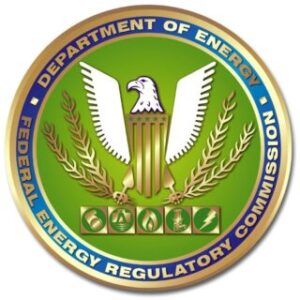
Pursuant to Section 19 of the Natural Gas Act (“NGA”) and Rule 713 of the Rules of Practice and Procedure of the Federal Energy Regulatory Commission (“FERC” or “Commission”), the Interstate Natural Gas Association of America (“INGAA”) submits this request for rehearing and request for clarification or, in the alternative, rehearing.
This proceeding was initiated by INGAA when it filed its April 2, 2012 Petition Requesting The Commission Adhere to its Existing Rules, Regulations and Procedures (“April 2012 Petition”). Through informal meetings with members of the interstate natural gas pipeline industry, Commission Staff began to promote a change to Section 2.55(a) of the Commission’s regulations, which deals with auxiliary installations. The Staff’s change to Section 2.55(a) dismissed the fundamental holding of the Commission order promulgating Section 2.55(a), that auxiliary installations are not jurisdictional facilities as contemplated in Section 7 of the NGA. Filing of Application For Certificates of Public Convenience and Necessity, Order No. 148, 14 Fed. Reg. 681 (Feb. 16, 1949) (“Order No. 148”). The Staff also added an implied right of way limitation to the definition of auxiliary installations even though no such limitation exists in the language of the regulation. This change meant that any installations outside of an existing right of way or temporarily using ground outside of previously used workspace could not qualify under Section 2.55(a). The Staff’s position harmed the pipeline industry by eliminating the historical, routine and justified practice of making certain of these auxiliary installations outside of existing rights-of-way for safety, security and other important purposes ancillary to the provision of interstate pipeline transportation services. When the Staff persisted in its newly adopted and erroneous modification of Section 2.55(a), INGAA filed its petition.
Among other things, INGAA’s April 2012 petition asked the Commission to affirm that Section 2.55(a) did not have an implied right of way limitation and to affirm that it would not seek to enforce the change recently adopted by Commission Staff. On December 20, 2012, the Commission responded to INGAA’s petition in this docket by issuing a Notice of Proposed Rulemaking entitled “Revisions to the Auxiliary Installations, Replacement Facilities, and Siting and Maintenance Regulations.” The December 2012 NOPR denied INGAA the relief it requested in its April 2012 petition, wrongly declaring that the change to Section 2.55(a) being promoted by its Staff always had been the Commission’s rule.
Although claiming that it was making no change to the meaning of Section 2.55(a), the December 2012 NOPR proposed revisions to the language of the Commission’s regulations to state that all activities related to the construction of auxiliary installations must take place within a company’s certificated right of way using previously approved work spaces. The Commission also proposed to add landowner notification requirements for auxiliary installations, replacement facilities and other activities performed within the right of way. The Commission acknowledged that these notification requirements were a change to its regulations.
INGAA responded to the December 2012 NOPR in two ways. On January 22, 2013, INGAA timely filed its request for rehearing from the December 2012 NOPR’s denial of the relief that INGAA had requested in its April 2012 Petition. INGAA, on behalf of its members, was an aggrieved party. The December 2012 NOPR immediately denied INGAA members the right previously afforded them under historical and proper regulatory construction to install auxiliary installations outside of existing rights-of-way and work space under Section 2.55(a) and imposed an obligation on pipelines to obtain certificate authorization prior to making certain auxiliary installations. As to these matters, the December 2012 NOPR was a final agency order. On March 5, 2013, INGAA also filed comments on the December 2012 NOPR.
On November 22, 2013, the Commission issued a final rule in this proceeding, Revisions to Auxiliary Installations, Replacement Facilities, and Siting and Maintenance Regulations, Order No. 790, 145 FERC ¶ 61,154 (2013) (“Final Rule”). In the Final Rule, the Commission persists in its erroneous ruling regarding Section 2.55(a) and persists as well in a fiction that its new ruling does not change what had been the plain and universal understanding of that provision for approximately 60 years until the December 2012 NOPR. The Commission refuses to acknowledge that its previous orders expressly held that auxiliary installations were not jurisdictional facilities under the NGA. The Final Rule ignores, misapprehends or disparages past precedent to achieve, through expediency, a desired result that is so sweeping that it could not be achieved, even through lawful notice and comment rulemaking. “It has become axiomatic that an agency is bound by its own regulations.” Panhandle Eastern Pipe Line Co. v. FERC, 613 F.2d 1120, 1135 (D.C. Cir. 1979). “The fact that a regulation as written does not provide FERC a quick way to reach a desired result does not authorize it to ignore the regulation or label it ‘inappropriate’” Id. “[T]he requirement that an agency provide reasoned explanation for its action would ordinarily demand that it display awareness that it is changing position.” FCC v. Fox Television Stations, Inc., 556 U.S. 502, 515 (2009). For all of these reasons, the Final Rule is unlawful.
In addition to unlawfully converting an entire class of exempt, non-jurisdictional auxiliary installations into jurisdictional NGA facilities, the Commission, without referencing a record of abuse, without identifying any material threat to the Commission’s statutory obligations, and without providing any premise based on relevant facts, extends regulatory limitations to these installations that in the past have applied only to separate and distinct replacement activities. This is the same infirm approach that resulted in the D.C. Circuit striking down the Commission’s expanded standards of conduct regulations in National Fuel Gas Supply Corporation v. FERC, 468 F.3d 831 (D.C. Cir. 2006) (“National Fuel”). The Commission’s Final Rule is arbitrary and capricious. It is not the product of reasoned decision making.







